The African Jacana | Uganda Birding
The African Jacana | Uganda Birding
The African jacana | Uganda Birding : is a wader in the family jacanidae, also known as “Lily walkers”. This is because of their slender legs and toes that enables them walk on the lily pads that blanket their wetlands. The specie is found in sub-Saharan Africa in countries like Uganda, Kenya, Tanzania, South Africa, etc. These unusual wading birds have extremely long and slim legs, toes and claws which enables them distribute their weight evenly. This basically allows them to walk across water on thin and flimsy floating water vegetation specifically the water lilies. These birds are also good divers and strong flyers accompanied by their squawking sound during flight. Besides, the specie has a keen sense of sight and hearing and relies little on its sense of smell.
Facts of the African Jacana bird
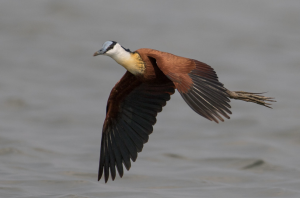
Physical description
The jacanas are generally conspicuous and unmistakable birds. The adult male is a long necked, legged and short tailed, medium sized with almost an egg shaped body. It is predominantly a rufous brown in color across the body, upper and lower wing areas although the shade of brown is darker below. The neck and head are white with a prominent black eye stripe and black primary flight feathers. The up surrounding of the neck is also black, the base of the front of the neck where it joins with the upper chest. However, the white feathers morph into a pale yellow to orange color.
The bills appear short, blue with a continuing frontal shield extending above the eye stripe. The feet and legs are grey with slim toes and claws appearing far too large for a bird of its size. The juveniles are similar to adults although lack the blue bill and have mainly a brown head. However, the underbody parts are white with a rufous patch on the belly. The adult female is similar to the male although generally larger in size and weight. Therefore, the female is larger than the male however, the coloring of the feathers are much the same between the sexes.
Unicity of the African jacana
Unlike nest building and parental care undertaken by the female of most birds, with the jacana the duties are reversed. During breeding, females usually take up with a harem of males. These individually build a nest and then awaits the arrival of the eggs. Once laid, the females thereafter moves on to the next male whilst the male bird incubates the eggs until hatching. The male is particularly protective of his chicks whereby she hides and move them about during times of danger. With the use of its wings, it is able to scoop up the young holding them beneath his wings against his body. Thereby moving about with just the chicks’ legs protruding and swinging below. This act results into a rather comical and strange looking multi legged creature which occasionally appears to have eight or more legs.
The size of the toes and claws of this bird combine to produce massive feet. In fact, it is designed to allow easy movement across lily pads and flimsy floating water vegetation. African jacanas are not very good flyers, instead, they are weak and only capable of short-distance flights. This is because these birds moult at the same time making them unable to fly until the new feathers have grown. These keeps the feathers stay clean and in good condition particularly important for water birds. Their ability to appear walking across water, lily pads and other flimsy floating vegetation has resulted to also being known as the “Jesus birds” or “Lily Trotters”. Chicks usually hide from predators by diving below the water surfaces and remaining there. In fact, this is done with just their beaks protruding above the water’s surface making indeed a fascinating and an amazing species to study.
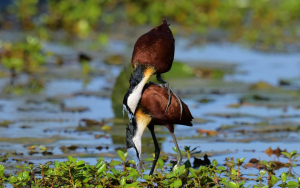
Breeding
This jacana has evolved a highly unusual polyandrous mating system. Whereby one female mates with multiple males and the male alone cares for the chicks. This is due to two factors: firstly, the eggs laid can equally be well incubated and cared for by both parents of the either sex. Secondly, the lakes that jacanas inhabits are so resource-rich. Therefore, the relative energy expended by the female in producing each egg is effectively negligible. Thereby, the rate-limiting factor of the breeding is the rate at which the males can raise and care for the chicks. As a matter of fact, and the female mates up with over 4 males.
Here, the male builds a semi-submerged floating nest with almost every aquatic plant material. Eventually, the female mates up with a male, laying 4 brown eggs with distinct dark brown to black camouflaged markings. Occasionally the female will simply lay the eggs outside a nest on a floating vegetation. Later, males collect the eggs under their wings and move them to a safer location. As soon as she lays the eggs, she moves on to a new male, leaving the previous male to incubate and raise the chicks. Within permanent wetlands, African jacanas are able to breed year round though where season influences a fall in water levels seasonal breeding may occur.
Incubating
Eggs are incubated for a period of up to twenty six (26) days by the male alone. However, he is not constantly on the nest due to the heat. Therefore, he will often require shading from the hot sun as opposed to incubation. Upon hatching, chicks are able to run, dive, swim, feed themselves and are protected by the adult male. A mating pair can have up to 30 clutches of eggs each season, resulting from either the same partner or various partners. At times this female jacana is highly selective about whom she chooses to mate with. Surprisingly, she rarely chooses the same partner for every clutch of eggs she lays.
Communication
These birds utter out loud, raucous shrieks, moans and almost barking noises. This is basically done when danger lurks or when intruders fly over their territories. Actually, it is a noisy species uttering out a range of calls and sounds. In flight, they utter a loud and fast staccato ”kreep-kreep-kreep”, almost like a nasal trilling sound. Alarm calls are particularly by necessity, extremely loud and consists of sharp single notes similar to “kaakup”.
Feeding
African jacanas occasionally choose seeds as their preferred diet. These include; fresh water insects, larvae, spiders, crustaceans and molluscs, not mention but a few. The specie normally forage whist swimming, walking across lily pads, and other floating vegetation. They are also able to catch flying insects whereby they have been seen picking insects from hippopotamus and buffalo backs.
Where to find them
In Uganda you can find them in Murchison falls national park, Mabamba swamp and at banks of most of Uganda’s Lakes and Rivers.

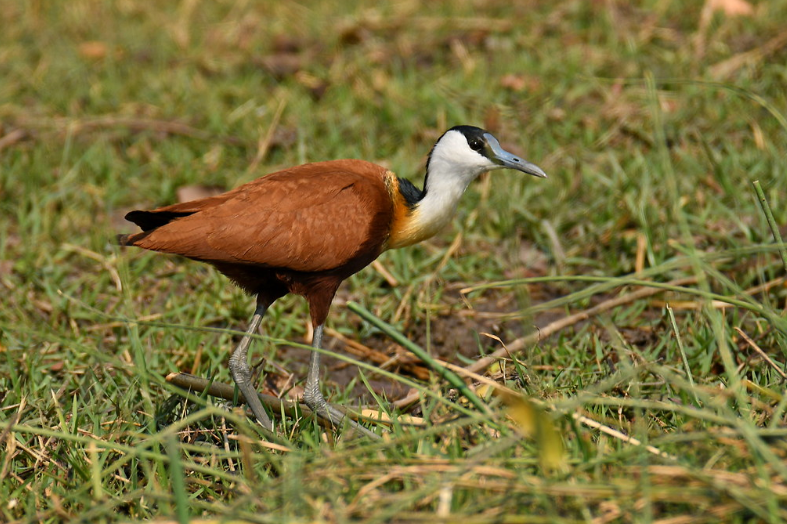






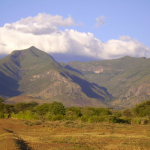
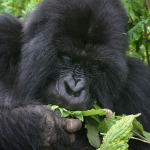
Hello! I just wish to offer you a huge thumbs
up for your great information you’ve got right here
on this post. I will be coming back to your blog for more soon.